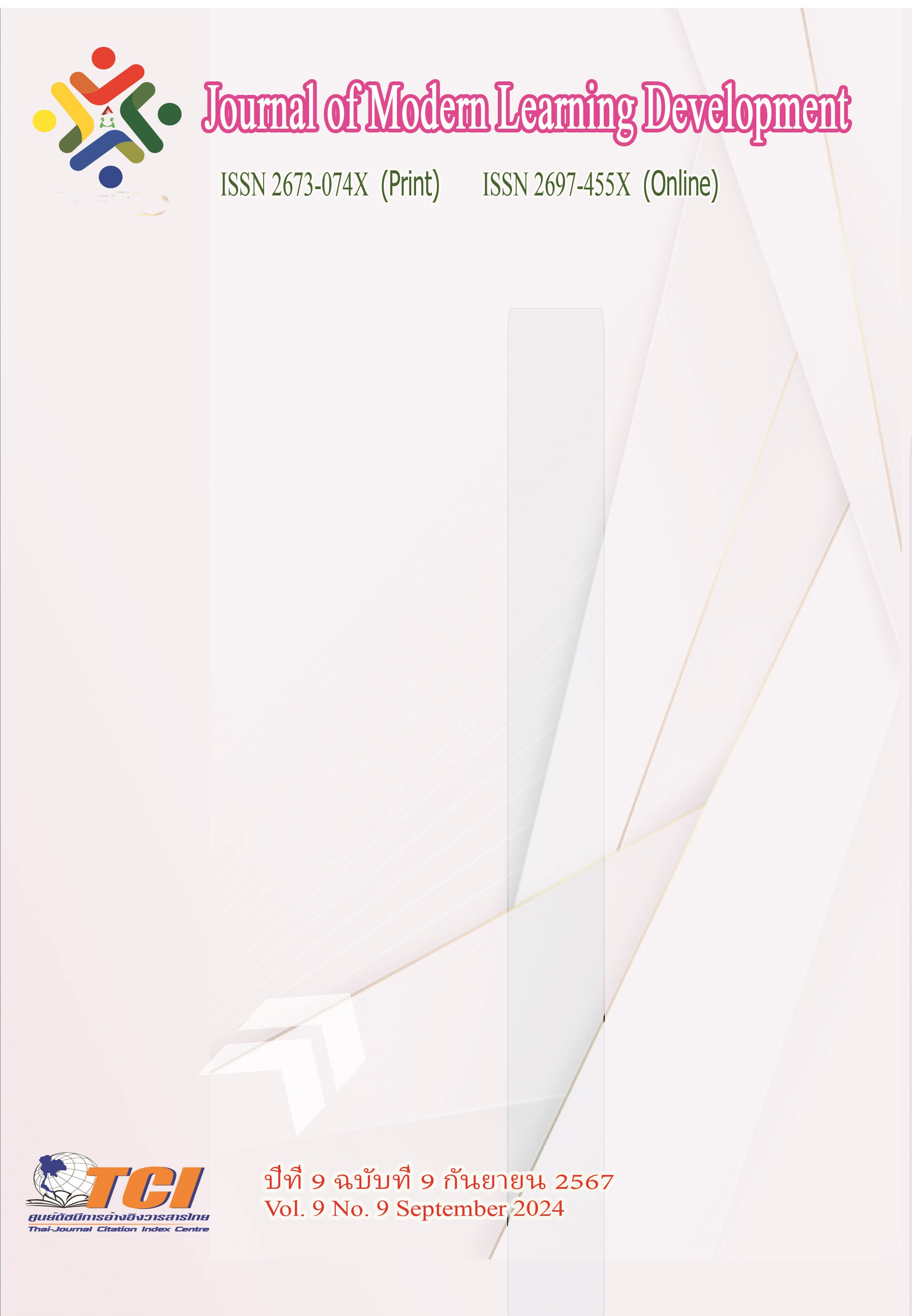Phochanawarak analysis: How to eat for good health
Main Article Content
Abstract
Article on nutritional analysis: How do I stay healthy. The objectives of the study are (1) to study the origin and importance of the Vinaya as it appears in the Vinaya Pitaka and (2) to analyze the values arising from the various diets. As prescribed by the Vinaya in the Bhochanavagga By this study, it was found that the value of practicing Dhamma according to the Vinaya provisions in the food section In order for the group of monks to be good and beautiful It is a blocking of all the āsavas that will arise from the flow of Dhamma that is affecting us in the present. and get rid of all the bad things that will arise in the future as well and for the sake of being a person with few illnesses, having mild disease, being energetic and strong, and for the well-being of monks who have good morals. To be able to stand firmly in the true Dhamma and generous with the discipline as well as to preserve the life of Buddhism so that it can continue to exist for a long time.
Article Details
References
แก้วธารา. (2557). ศีล 5 ชุบชีวิตลิขิตกรรม. กรุงเทพมหานคร: สำนักพิมพ์ปราชญ์.
ชัชชญา พีระธรณิศร์. (2562). ความมีวินัยในตนเอง : จุดเชื่อมโยงคุณธรรม จริยธรรมตามคุณลักษณะบัณฑิตที่พึงประสงค์. ศึกษาศาสตร์สาร มหาวิทยาลัยเชียงใหม่.
ประวีณ ณ นคร. (2558). วินัย: หลักและวิธีการรักษาวินัย. กรุงเทพมหานคร: กลุ่มโรงพิมพ์ สำนักงานเลขาธิการ สำนักงาน ก.พ..
พระครูธรรมจักรเจติยาภิบาล. (2559). พระวินัย : กฎหมายพระสงฆ์. วารสารวิทยาลัยนครราชสีมา. 6 (1), 339-345.
พระมหาเพ็ญภาค ฐิตมโน (พราหมณ์ชื่น). (2560). การแก้ปัญหาที่เกิดจากความโลภในการบริโภคตามหลักพระพุทธศาสนา”. มหาจุฬาวิชาการ. 3 (1), 96-107.
มหาจุฬาลงกรณราชวิทยาลัย. (2535). พระไตรปิฎกภาษาบาลี ฉบับมหาจุฬาเตปิฏกํ 2500. กรุงเทพมหานคร: โรงพิมพ์มหาจุฬาลงกรณราชวิทยาลัย.
มหาจุฬาลงกรณราชวิทยาลัย. (2539). พระไตรปิฎกภาษาไทย ฉบับมหาจุฬาลงกรณราชวิทยาลัย. กรุงเทพมหานคร: โรงพิมพ์มหาจุฬาลงกรณราชวิทยาลัย.
มหามกุฏราชวิทยาลัย. (2525). พระไตรปิฎกภาษาบาลี ฉบับสฺยามรฏฺเตปิฏกํ 2525. กรุงเทพมหานคร: โรงพิมพ์มหามกุฏราชวิทยาลัย.
มหามกุฏราชวิทยาลัย. (2532). อรรถกถาภาษาบาลี ฉบับมหาจุฬาอฏฺกถา. กรุงเทพมหานคร: โรงพิมพ์มหาจุฬาลงกรณราชวิทยาลัย.
มหามกุฏราชวิทยาลัย. (2534). พระไตรปิฎกพร้อมอรรถกถา แปล ชุด 91 เล่ม. กรุงเทพมหานคร: โรงพิมพ์มหามกุฏราชวิทยาลัย.
มหามกุฏราชวิทยาลัย. (2539). ฎีกาภาษาบาลี ฉบับมหาจุฬาฎีกา. กรุงเทพมหานคร: โรงพิมพ์มหาจุฬาลงกรณราชวิทยาลัย.
ยอดกมล อุดหนุน. (2561). ความเชื่อและปฏิบัติการบนพื้นที่ศักดิ์สิทธิ์ในมหาวิทยาลัยอุบลราชธานี. วารสารศิลปศาสตร์ มหาวิทยาลัยแม่โจ้. 6 (1), 73.
สมเกียรติ แสงวัฒนาโรจน์. (2558). พุทธภาษิต ทางปฏิบัติเพื่อความมีโรคน้อย. กรุงเทพมหานคร: โรงพิมพ์แห่งจุฬาลงกรณ์มหาวิทยาลัย.
สมเด็จพระพุทธโฆษาจารย์ (ป.อ. ปยุตโต). (2561). พจนานุกรมพุทธศาสน์ ฉบับประมวลศัพท์. (พิมพ์ครั้งที่ พิมพ์ครั้งที่ 32). กรุงเทพมหานคร: โรงพิมพ์มหาจุฬาลงกรณราชวิทยาลัย.
สำลี รักสุทธี. (2535). ศีลสุดยอดวินัยของพระพุทธศาสนา. กรุงเทพมหานคร: พัฒนาศึกษา.
สุชีพ ปุญญานุภาพ. (2535). พระไตรปิฏกฉบับสำหรับประชาชน. กรุงเทพมหานคร: มหาจุฬาลงกรณราชวิทยาลัย.


